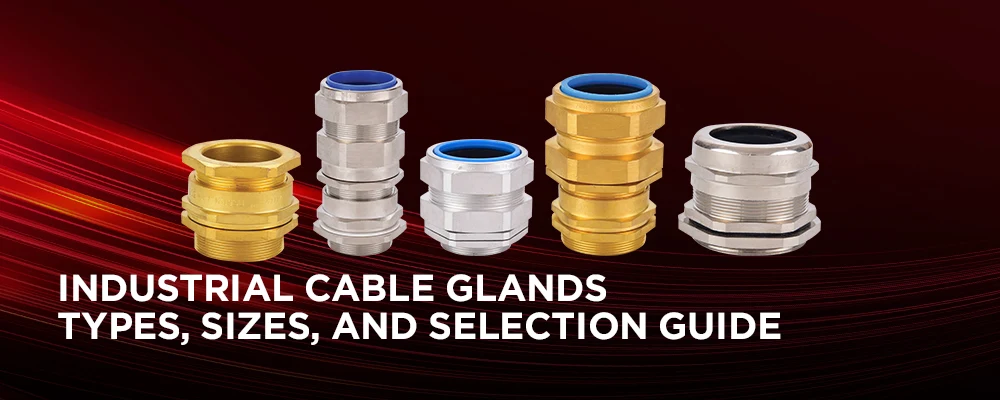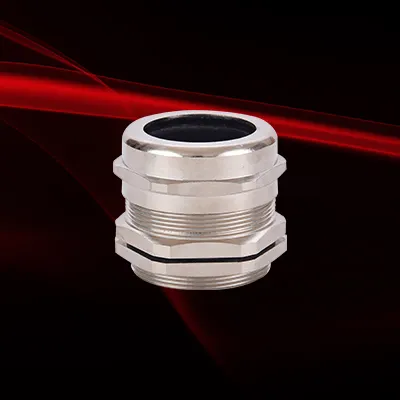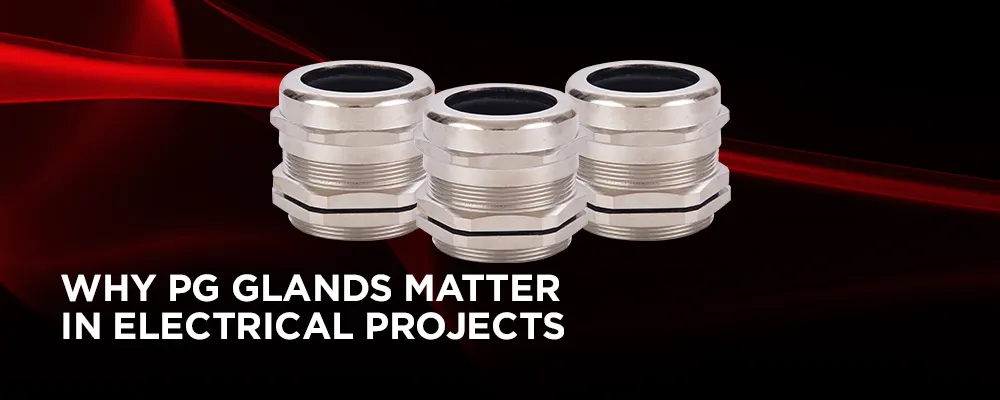
In the realm of industrial applications, ensuring the safety and efficiency of electrical systems is paramount. A critical component that facilitates this is the cable gland. These devices not only secure cables but also provide protection against environmental factors, ensuring the longevity and reliability of electrical installations. Understanding the different types of industrial cable glands, their sizes, and how to select the appropriate one is essential for optimal performance.
A cable gland, often referred to as a cable connector or fitting, is a device designed to attach and secure the end of an electrical cable to equipment. Its primary purpose is to provide strain relief and ensure the cable’s integrity by sealing it against dust, moisture, and other environmental contaminants. In industrial settings, cable glands play a vital role in maintaining the safety and functionality of electrical systems. They prevent cable pull-out, protect against external influences, and ensure that the enclosure maintains its ingress protection (IP) rating. Additionally, cable glands can offer grounding and earthing features, which are crucial in preventing electrical hazards.
The selection of a cable gland depends on the specific requirements of the application, including the type of cable used, environmental conditions, and industry standards. Here are some common types of industrial cable glands:
- Non-Armoured Cable Glands: Designed for use with unarmoured cables, these glands provide sealing and retention without the need for grounding. They are commonly used in general industrial applications where mechanical protection is not a primary concern.
- Armoured Cable Glands: Specifically designed for armoured cables, these glands provide mechanical retention and electrical continuity by bonding the armour to the gland’s body. They are ideal for applications requiring enhanced mechanical protection and are commonly used in hazardous environments.
- Explosion-Proof (Ex) Cable Glands: These glands are engineered to prevent the ignition of explosive atmospheres. They are essential in industries such as oil and gas, chemical processing, and mining, where flammable gases or dust may be present.
- EMC Cable Glands: Designed to protect against electromagnetic interference, EMC cable glands ensure the integrity of data and signal transmissions. They are used in applications where maintaining signal quality is critical, such as telecommunications and data centers.
- ATEX Cable Glands: Compliant with ATEX directives, these glands are suitable for use in explosive atmospheres within the European Union. They are designed to ensure safety in hazardous environments by preventing the entry of explosive gases or dust into the equipment.
Each type of cable gland is designed to meet specific application requirements, and selecting the appropriate type is crucial for ensuring safety and performance.
Selecting the correct size of a cable gland is vital to ensure a secure fit and maintain the integrity of the cable and equipment. The size of a cable gland is typically determined by the cable’s overall diameter, the type of cable (armoured or unarmoured), and the thread size required for the equipment entry.
Manufacturers often provide cable gland size charts that correlate cable dimensions with the appropriate gland size. For instance, a cable with a diameter of 10-14mm might require a gland size of M20. It’s essential to consult these charts to ensure compatibility.
When selecting a cable gland, consider the following factors:
- Cable Type: Determine whether the cable is armoured or unarmoured, as this will influence the type of gland required.
- Cable Diameter: Accurately measure the cable’s diameter to select a gland that provides a proper seal.
- Environmental Conditions: Consider factors such as temperature, humidity, exposure to chemicals, and the presence of explosive atmospheres.
- Ingress Protection (IP) Rating: Ensure the gland provides adequate protection against dust and moisture ingress, as required by the application.
- Material Compatibility: Select a gland material compatible with both the cable and the operating environment.
By carefully evaluating these factors, you can select a cable gland that ensures safety, reliability, and longevity in your specific application.
Proper installation of a cable gland is crucial to maintain the integrity of the cable and ensure the safety of the electrical system. Here is a step-by-step guide to fitting a cable gland:
- Prepare the Cable: Measure and cut the cable to the desired length, ensuring sufficient excess for proper connection to equipment. Strip the outer sheath carefully, avoiding damage to the inner conductors.
- Disassemble the Gland: Unscrew the various components of the cable gland, typically including the locknut, sealing ring, and gland body.
- Insert the Cable: Slide the gland components onto the cable in the correct order, starting with the locknut, followed by the sealing ring.
- Prepare the Armour (if applicable): For armoured cables, carefully strip the armour to the required length, ensuring not to damage the inner sheath.
- Assemble the Gland: Insert the cable into the gland body, ensuring the sealing ring is positioned correctly to provide an effective seal. Tighten the gland components securely to achieve the required strain relief and sealing performance.
- Secure the Gland: Attach the gland to the equipment or enclosure, ensuring a tight fit to maintain the ingress protection rating.
The industrial cable glands market in the USA is witnessing steady growth due to increasing industrialization and stringent safety regulations. Key trends include:
- Rising demand for explosion-proof cable glands in hazardous industries.
- Growth in renewable energy projects requiring advanced cable management solutions.
- Expansion of data centers and telecommunication networks.
Industries such as oil and gas, aerospace, and manufacturing are major consumers of high-quality cable glands, contributing to market expansion.
Atlas Metal Industries is a leading manufacturer of industrial cable glands, offering high-quality solutions for various industries. With a focus on precision engineering and durable materials, Atlas Metal Industries ensures reliability and compliance with global standards.
Why Choose Atlas Metal Industries?
- Wide range of brass, stainless steel, and explosion-proof cable glands
- High-quality manufacturing standards
- Compliance with industry regulations
- Trusted by industries worldwide
Explore more about their products at Atlas Metal Industries.
Industrial cable glands play a crucial role in ensuring the safety, durability, and efficiency of electrical installations across various industries. From selecting the right type based on application needs to choosing the correct size for a secure fit, careful consideration is essential for optimal performance. By following proper installation steps, you can enhance cable protection, prevent environmental damage, and maintain the integrity of your electrical system. Whether for general industrial use, hazardous environments, or specialized applications, selecting the appropriate cable gland ensures long-term reliability and safety.
Visit our website to learn more about our products and services and find the perfect solution for your needs.
For inquiries, reach us at sales@atlasmetalind.com or call us at +91-288 2730 944.









